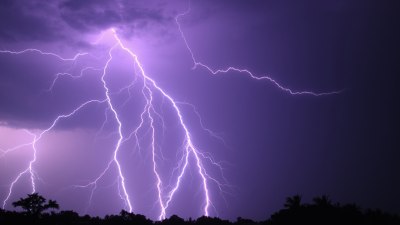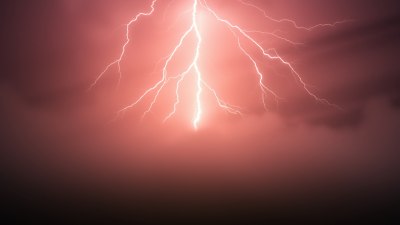Summer Lightning: More Dangerous Than Winter Storms
Explore why summer lightning poses higher risks than winter storms and learn essential safety tips for protection.

When thinking about severe weather hazards, our minds often drift toward winter storms, with their blizzards, icy roads, and freezing temperatures. These conditions can certainly disrupt daily life and pose significant dangers. However, an equally threatening but often underestimated meteorological phenomenon is summer lightning. Despite its radiant beauty and awe-inspiring displays, summer lightning presents a range of hazards that, statistically and practically, can be more dangerous than the typical winter storm.
Understanding Lightning: A Brief Overview
Lightning is a massive electrostatic discharge caused by an imbalance between storm clouds and the ground or within the clouds themselves. This rapid discharge produces a bright flash and generates intense heat—upwards of 30,000 kelvin, five times hotter than the surface of the sun—which ionizes the air and creates thunder. During summer months, the conditions for lightning formation are abundant, given the increased atmospheric instability, moisture, and heat, which fuel vigorous thunderstorm development.
Unlike winter storms that primarily affect specific geographic zones during cold months, lightning can strike in a variety of locations, often with little warning, making it an unpredictable and persistent threat throughout the summer season.
Frequency and Occurrence of Lightning Versus Winter Storms
One major reason summer lightning is more dangerous is its prevalence. Summer months bring more frequent thunderstorms, particularly in regions like the central and southeastern United States, where warm temperatures and humidity promote storm growth almost daily. In contrast, winter storms are seasonal and geographically limited. Lightning strikes millions of times globally every day, with a notable increase during peak summer months.
In the U.S. alone, it is estimated that lightning causes over 20 million cloud-to-ground flashes during the summer. This contrasts with winter storms, which, while impactful, occur less frequently and in confined periods throughout the colder seasons. This sheer frequency makes summer lightning a constant hazard during the warmer half of the year.
Human Impact and Fatalities
Looking at statistical data highlights the dangers posed by summer lightning. Lightning is responsible for an average of 20 to 30 direct fatalities each year in the United States, with thousands more injured. These incidents can occur during a wide range of summer activities such as hiking, boating, golfing, or even attending outdoor events. Many victims underestimate the speed and reach of lightning bolts, believing they can outrun or dodge them, which tragically is often not the case.
Winter storms also cause fatalities, primarily through traffic accidents, hypothermia, and exposure. While important to recognize, these deaths tend to result from indirect effects and often allow more time for preparation and response. Lightning's sudden, violent strikes allow little time for reaction, contributing to its high danger level.
Damage to Infrastructure and Property
Another dimension where summer lightning eclipses winter storms in danger is its capacity to inflict rapid, catastrophic damage on infrastructure. Lightning strikes can ignite wildfires, damage power grids, and cause structural fires that threaten homes and businesses. For instance, in dry summer conditions, a single lightning bolt can start a wildfire that spreads rapidly, endangering lives and ecosystems.
Winter storms, while also capable of causing power outages and infrastructural damage, usually afford more time for mitigation efforts such as snow removal and power line reinforcement. Lightning damage is often instantaneous and can cripple critical systems in an instant.
The Science of Lightning Strikes and Their Reach
Lightning strikes are not confined to tall objects alone; they can travel significant distances horizontally before hitting the ground. This phenomenon, known as a 'bolt from the blue,' allows lightning to strike several miles away from the parent thunderstorm. Such unpredictability increases risk, especially for those who believe the storm has passed when it has not.
Winter storms, although dangerous due to wind, ice, and snow, offer visible cues for their approach and duration. Lightning's suddenness makes it an invisible menace — it cannot be avoided simply by observing the sky when conditions are deceptively calm.
Psychological and Social Factors Increasing Risk
Public perception often underestimates lightning dangers. Because lightning is more common but less visible outside its brief flashes, many people are complacent during thunderstorms, engaging in outdoor activities or failing to take shelter promptly. Contrarily, snow and ice conditions in winter are visibly disruptive and widely accepted as reasons to alter behavior, such as delaying travel or stocking supplies.
This complacency contributes to a higher number of lightning-related injuries and deaths in summer. Educational campaigns have sought to improve awareness, emphasizing the '30-30 Rule'—if the time between seeing lightning and hearing thunder is 30 seconds or less, seek shelter immediately and remain indoors for at least 30 minutes after the last thunderclap.
Safety Measures to Mitigate Summer Lightning Hazards
Given the higher risks, adopting rigorous lightning safety practices during summer is essential. Key recommendations include avoiding open fields, hilltops, and isolated trees where lightning is more likely to strike. Seeking shelter inside buildings or fully enclosed metal vehicles provides significantly better protection than temporary covers such as tents or open shelters.
Outdoor enthusiasts should monitor weather forecasts diligently, invest in lightning detection apps or devices, and have clear evacuation or shelter plans in place. Schools, parks, and event organizers must establish robust protocols to suspend activities promptly at the sign of approaching thunderstorms to protect vulnerable populations, especially children.
Comparative Economic and Environmental Impacts
The economic repercussions of summer lightning extend beyond immediate property damage. Lightning-induced wildfires can devastate large areas of forests and grasslands, affecting biodiversity, air quality, and local economies dependent on natural resources and tourism. Suppression efforts and recovery costs can amount to billions annually in heavily impacted regions.
Winter storms likewise incur significant expenses through snow removal, road repairs, and emergency services, but these tend to have a more predictable pattern and longer lead times for preparation. The unpredictability and rapid onset of lightning-related disasters thus impose unique economic strain.
Technological Advances in Lightning Detection and Prevention
Recent advances in meteorological technology have improved the detection and tracking of thunderstorms capable of producing dangerous lightning. Lightning detection networks now provide accurate real-time data about strike activity, allowing better public warnings and response. Research into lightning rods, grounding systems, and building materials continues to reduce damage and injuries.
Despite this progress, the challenge of preventing lightning strikes remains significant due to their natural, sudden, and potent nature. Continued public education and investment in infrastructure resilience remain critical components of risk reduction strategies.
The Role of Climate Change in Lightning Risk
Scientific studies suggest that climate change may increase the frequency and intensity of thunderstorms, potentially leading to more lightning activity. Rising global temperatures and heightened atmospheric moisture levels create favorable conditions for convection and storm development. This trend could accentuate the dangers associated with summer lightning in coming decades, highlighting the importance of proactive adaptation and preparedness for communities.
Winter storm patterns are also shifting, but the tangible, immediate threat posed by lightning makes it a growing concern for weather-related hazard management in an evolving climate.
Summary of Why Summer Lightning Surpasses Winter Storms in Danger
Summarizing the key factors, summer lightning is more dangerous than winter storms primarily due to its higher occurrence frequency, suddenness, unpredictability, direct lethality, and the vigorous damage it can cause to property and ecosystems. The combination of intense heat, electrical energy, and fast-moving storms creates an environment where humans and infrastructure are at considerable risk.
Moreover, social and psychological factors related to risk perception contribute to a lack of adequate protective measures during thunderstorms. Unlike winter storms, which visibility and preparedness levels help to mitigate, lightning requires heightened vigilance and respect to avoid catastrophe.
Taking Lightning Safety Seriously in Daily Life
Everyone living in or visiting lightning-prone areas must internalize the dangers of summer lightning and diligently apply safety protocols. Simple behaviors, such as moving indoors when storms threaten, refraining from water-based activities, and avoiding metal objects outdoors, can significantly reduce injury risks.
Collective awareness and respect for natural forces empower individuals to coexist safely with summer lightning's majestic but hazardous displays.
In a world prone to increasingly variable weather patterns, acknowledging the threat of summer lightning and prioritizing effective response strategies serves as a critical component of personal and community resilience. While winter storms demand attention and preparation, summer lightning's relentless and potent danger commands equal, if not greater, vigilance.











